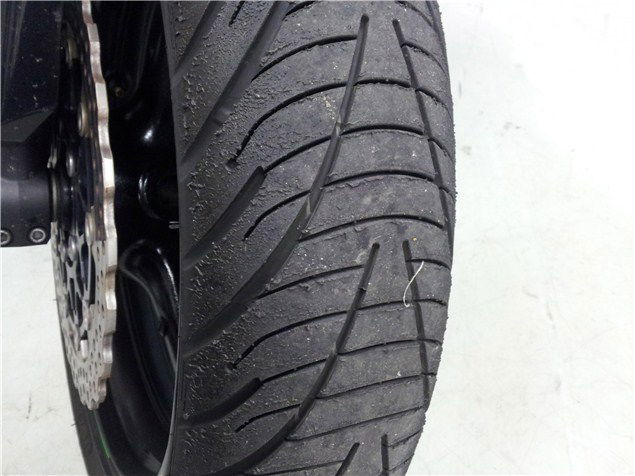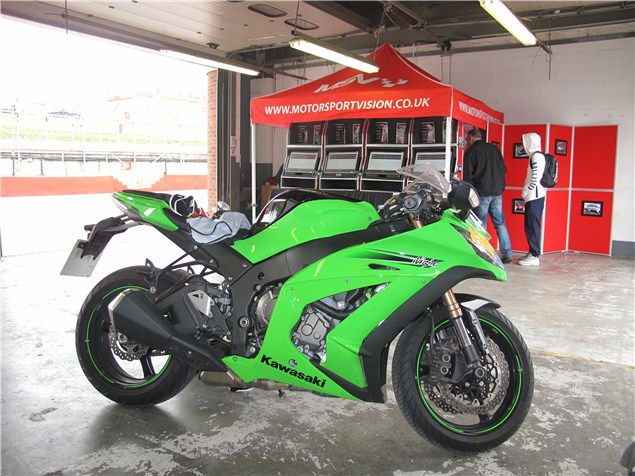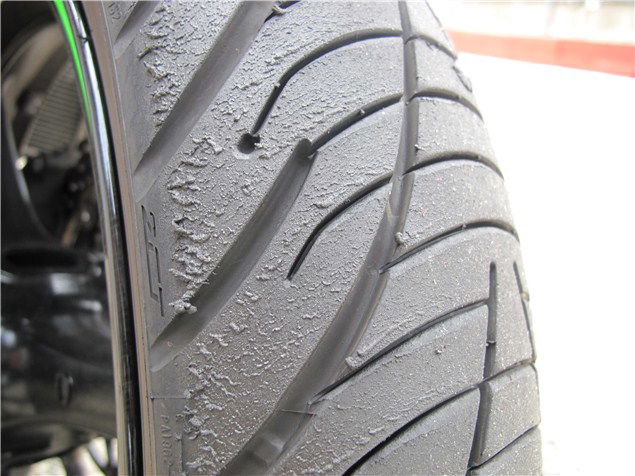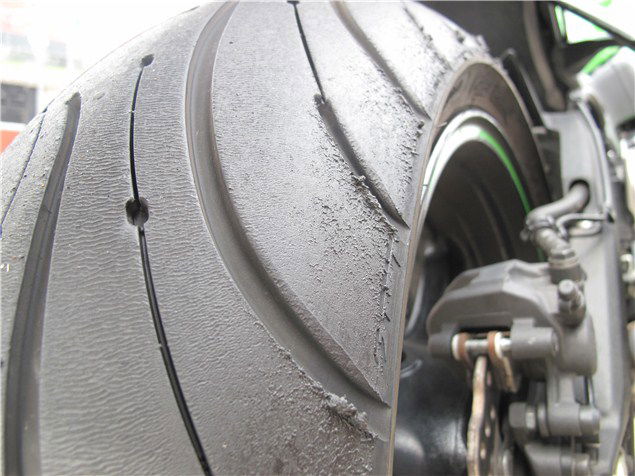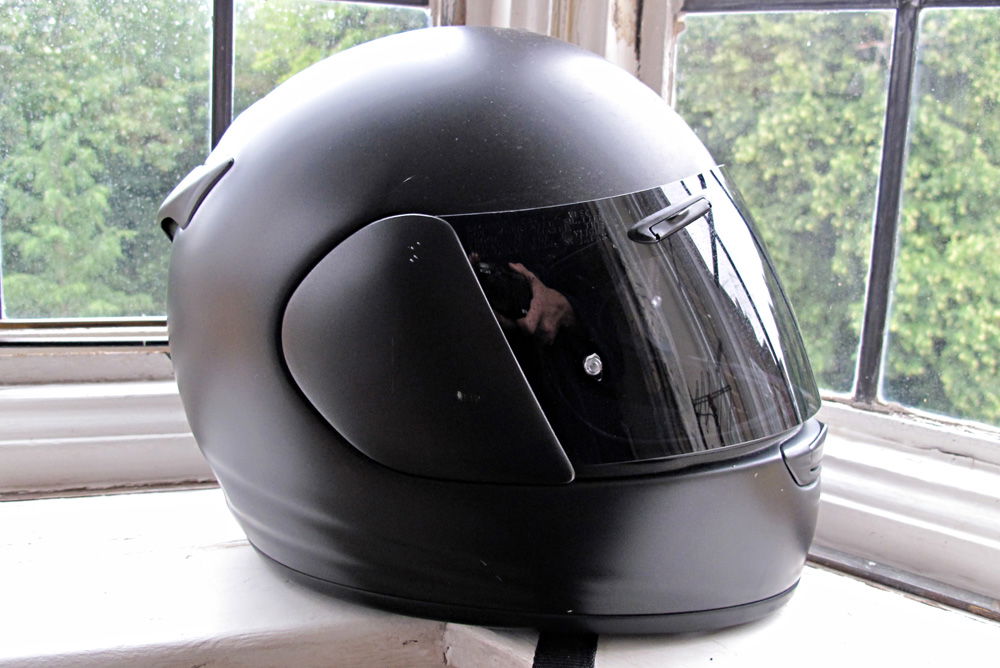Michelin Pilot Road 3 1800-mile tyre review
From wet roads to trackdays. I've put them through their paces

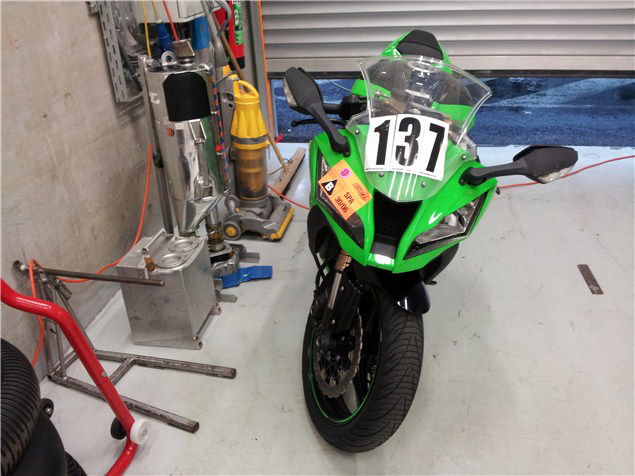
I’ve been running the new Michelin Pilot Road 3s on my 2011 ZX-10R for 1800 miles. In that time I’ve lost count of the number of people who’ve asked me why I’m running wets on my bike. I can’t blame them for thinking that, because Michelin’s new Pilot Road 3s have a very weird-looking tread pattern and don’t look like any other road tyres on the market.
At the heart of that weird tread pattern is the new ‘Sipe’ technology. These sipes are essentially the thin gaps in the tyre’s tread pattern which act to break the water film and help the tyre remain in contact with the road. Each sipe is connected to a series of small wells that Michelin call reservoirs and these are used to store the water on contact and then release it once the that portion of tyre is no longer in contact with the road.
So really, you wouldn’t think there’s much new here. Afterall, the tread pattern on your tyres has been designed to do exactly the same thing. Or has it? Not exactly, as the sipes sit between the normal tread pattern and are much more abundant than the usual grooves in your tyre. So while the sipes remove the water, the tread can work harder at finding grip.
On the tyre’s launch, Michelin claimed it could do everything: kneedown in the wet, good grip on dry roads, lots of miles. It all seemed a bit like the marketing machine had gone into overdrive.
I’ve clocked up 1800 miles on them so far, with a majority of the miles being motorways, it has to be said. A recent trip to Spa contributed to around 650 of those.
The warm-up time for normal road-riding could almost be measured in metres, not miles. My ZX-10R has traction control, which would normally chirp in if I gassed the bike up as soon as I left the drive, but it doesn’t with the Pilot Road 3s they just dig in. I can also get to the traffic lights at the end of my road (it’s not a very long road) and pull a rolling stoppie without the front washing out.
On a Sunday blast, they’re faultless. I don’t find myself lusting after more grip like I would have done if I’d fitted sports-touring tyres to a superbike 5 years ago. They warm-up fast and feel good from the very word go.
In the wet they’re nothing short of impressive. Sometimes when you have to go places on a superbike in the wet, you need a deep breath before you set off but the wet conditions don’t affect my confidence with these tyres. It takes a hell of a lot of front brake on a wet road to get the ABS kicking in.
At Spa I went out on track for one session. It’s a fast track, with lots of flowing corners. While the Pilot Road 3s felt good for the majority of the track, I was only tickling the bike ‘round and didn’t learn the track enough to push the tyres and see what they would do. The only real excessive wear I noticed after Spa was to the sipes on the front wheel, where under heavy braking they had started to wear. However, on certain points on the track you're scrubbing off speed from 150+mph and so that's the wear you'd expect. You're not going to be doing that on the road 3 times every couple of minutes.
That said, they weren’t rubbish like I’d expected them to be, so I headed to Brands Hatch to ride the GP circuit, to properly put them through their paces.
I’d booked into the Advanced group, however seeing as only about 5 people in that group weren’t going to be lining up on the British Superbike grid at Brands Hatch in a fortnight’s time, I changed my group to the Intermediate. I’d rather not get in the way of ten Superstock 1000 riders all going for the same bit of tarmac.
I didn’t run tyre warmers and set the pressures from cold to 26psi rear and 28psi front. Quite low, really. However, after my outing at Spa, I felt that I could do with as much flex at the front as possible, without over-working the tyre. On the rear, I went for 26psi as I’d intended to really work it hard and get it spinning to see if it would wear in double-quick time.
After the first session, where I gently wobbled ‘round to learn the track, the tyres came hot with 30psi rear and 31psi front. I probably could have run them even lower but kept them so.
If you’re running these tyres, I can’t imagine you’re going to be taking them into the Advanced group on a trackday without realising they’re lacking compared to an out-and-out Supersport tyre and treat them accordingly.
However, in the Intermediate group, I got overtaken once and he was on slicks. I found the Pilot Road 3s a bit weird to ride on; instead of running in with a plenty of corner speed, I was getting every last drop of braking done upright, turning in as late and getting on the gas earlier to try and ask less of the front tyre. I’m confident a better rider could push the front harder than I did in the corners, but I didn’t need to push it.
While the traction control did kick in a fair bit throughout the lap, I was really provoking it. Leant over on corners like Clearways, Paddock Hill Bend, Druids, Graham Hill, infact every corner, I was opening the throttle way earlier than I usually would, often well cranked over. To be honest with you, I was just having fun getting the rear moving. On the launch of the ZX-10R in Qatar, we were running super-sticky Bridgestone BT-003s and they were moving around just as much. When driving out of corners with the bike more upright there was no spinning, no traction control intervention.
Can you take the Pilot Road 3s on track? Absolutely. Are there better tyres for trackdays? Yes.
After the trackday I was expecting, confident infact, that the tyres would be completely knackered. They’re not.So far, they’ve clocked up 1800 miles in all conditions, including 7 laps of Spa and over 20 laps of Brands Hatch GP they’re not even half-way finished.
Which is a shame really, as I was hoping the smugness that oozed from the Michelin marketing material would have been a major Achilles heel.
As it turns out, I’ve been proven wrong.
You can see a lap of Brands Hatch GP with Michelin Pilot Road 3s on the ZX-10R
Thanks to Club MSV for the tracktime: www.clubmsv.co.uk

